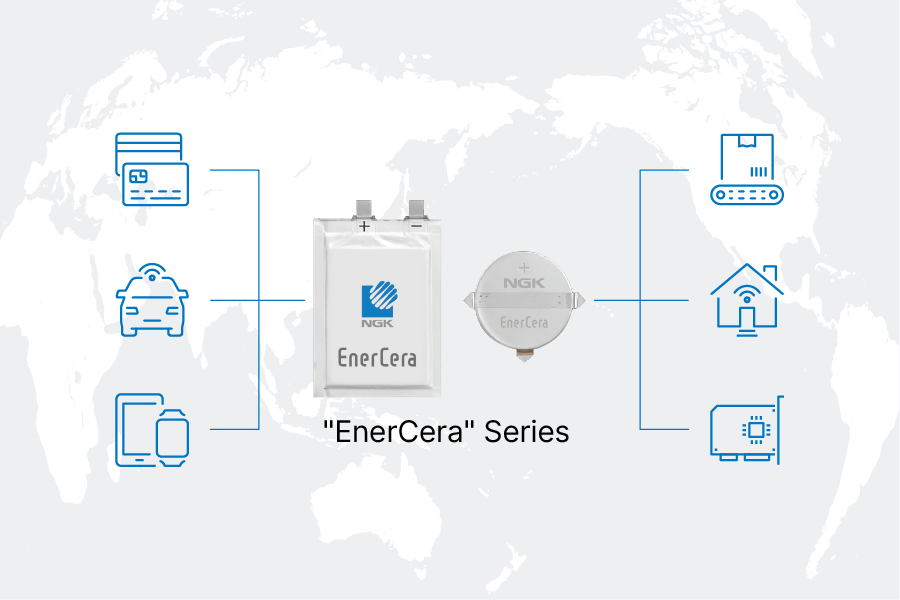major tire manufacturerR&D division
Hi-Tech Battery Holds Key to Next-Generation Tire Pressure Monitoring SystemBattery limitations hamper quest for low-profile, lightweight, and heat-resistant sensor

Solutions
EnerCera Battery: Making the Ultimate in Compact, Lightweight Sensors a Reality
Solution Offered by EnerCera battery
The EnerCera Coin operates in a temperature range of -40 to 105℃ / -40 to 221°F. The Coin’s compact and thin profile and excellent heat resistance characteristics means it is suitable for in-tire applications and can be used in all manner of environments, from freezing climates to highway driving.
The EnerCera Coin can support the broadband technologies (such as Low-Power Wide Area technology, or LPWA) that are necessary to capture, transmit and analyze large volumes of sensor data.
The EnerCera Coin can also be miniaturized, making it suitable for not only the tire sensors used by commercial vehicles, but also those used by compact cars.
Trials of technologies for generation and wireless power transfer using the EnerCera Coin are currently underway in conjunction with leading energy harvesting researchers.
EnerCera, an Ultra-Thin Solution that Enables Miniaturization and Weight Reduction
While gathering information on batteries, the members of the development team came across information on the Internet that described the applications of EnerCera battery, a ultra-small and ultra-thin Lithium-ion rechargeable battery manufactured by NGK. The team contacted NGK and explained their situation. Presently, NGK sent them information on EnerCera’s features and also provided advice for solving their specific issue. By testing the EnerCera battery, for the first time that made the engineers in the development team feel that EnerCera offered infinite possibilities. In particular, the team felt that the EnerCera Coin would enable them to create a smaller, lighter and thinner tire sensor.
Building a Superior Tire Sensor Using the EnerCera Coin
The development team set about testing the samples they had received on a range of tires, from those for large commercial vehicles all the way down to tires for compact cars. Because the EnerCera Coin offers superior heat resistance and can be soldered directly to a circuit board without the use of a battery holder, the engineers were able to make their sensor over 10% smaller and lighter than their competitor’s. They also verified that the sensor can be operated under the high-G environment of a rotating tire. These findings led the team to select the EnerCera Coin as the power source for its next-generation TPMS. One of the team’s main reasons for selecting EnerCera battery was the fact that the battery has an operating temperature range of -40 to 105℃ / -40 to 221°F, allowing it to be used in all environments, irrespective of whether the vehicle is parked in extremely cold weather, or driving on the highway.
Trials of the EnerCera Coin are also ongoing in conjunction with researchers in the fields of energy harvesting*, ultrasonic power transfer, and other modes of long-distance wireless power transfer, with the aim of developing generation and transmission solutions in the near future.
*Energy harvesting: The conversion into energy of light, vibration, and temperature differences found in the environment.


